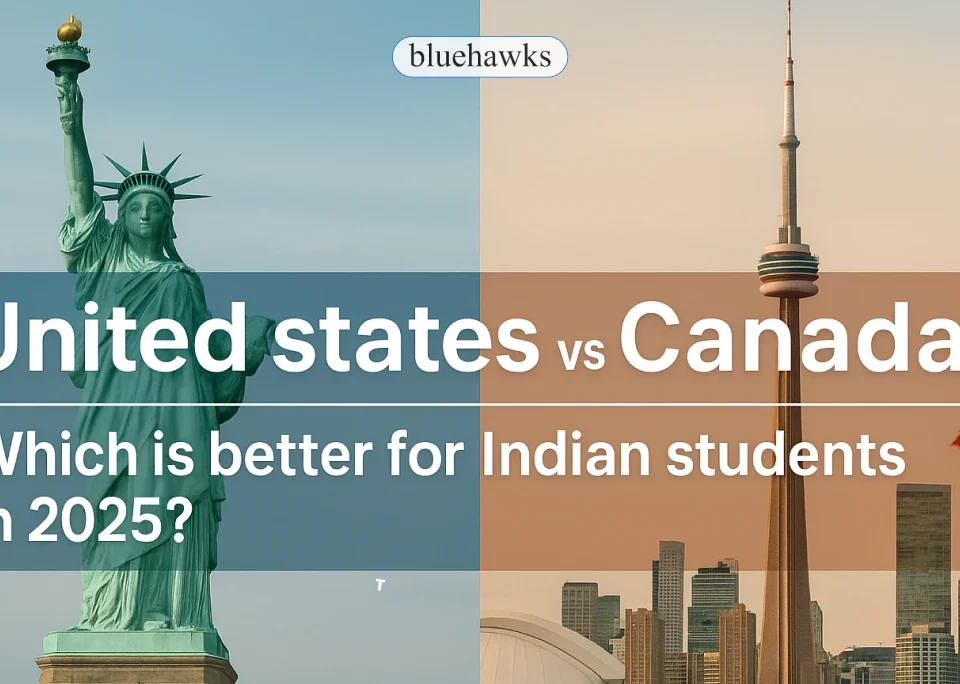Which is better SDS or non SDS for Canada?

Which is better SDS or non SDS for Canada?
Estimated reading time: 8 minutes
Are you dreaming of studying in Canada and feeling torn between SDS and non-SDS visa applications? Worry not! We’re here to clear the confusion surrounding SDS and non-SDS visa applications in Canada, making your journey smoother. This blog will provide a comprehensive comparison of the Student Direct Stream (SDS) and non-SDS visa pathways to help you make an informed decision.
Table of contents
- Which is better SDS or non SDS for Canada?
- What is an SDS Visa?
- What is a Non-SDS Visa?
- Key Differences Between SDS and Non-SDS
- Eligibility Requirements for SDS and Non-SDS
- Required Documents for SDS and Non-SDS Applications
- Top 5 Universities for SDS and Non-SDS Students
- Step-by-Step Guide to Applying for SDS and Non-SDS Visas
- Conclusion: Which is Better?
- Ready to take the next step?
- Frequently Asked Questions
We all know that getting a student visa to study abroad can take a long time. It’s best to apply as soon as you get an offer letter from a university because the process can last several months. To make things easier and faster, the Canadian government created the Student Direct Stream (SDS).
Since the launch of SDS, the visa process for international students has become much quicker and smoother. With SDS, you can get your visa processed faster than before, allowing you to start studying in Canada sooner! Additionally, the SDS visa program has a higher success rate than other visa options, making it a fantastic choice for international students.
What is an SDS Visa?
If you plan to study in Canada, you might have heard about the Student Direct Stream (SDS) visa. The Canadian government created this program to simplify and expedite the visa process for eligible students from specific countries, including India. Here are some key points about the SDS visa:
- Faster Processing Times: SDS applications are typically processed within 20 days, compared to several months for non-SDS applications.
- Higher Success Rate: The success rate for SDS visa applications is around 70%, making it a reliable option for international students.
- Online Application: The entire application process for SDS visas is conducted online, providing convenience and efficiency.
- Health Insurance: Applicants must obtain health insurance coverage for their studies in Canada.
What is a Non-SDS Visa?
A non-SDS visa is a more traditional pathway for studying, working, and living in Canada, available to students from all countries. This process involves a conventional application method with longer processing times and more detailed documentation requirements. Key aspects of the non-SDS visa include:
- Longer Processing Times: Non-SDS applications can take several months to process, depending on the volume of applications and other factors.
- Language Proficiency Requirements: While language proficiency requirements such as IELTS scores are similar to those for SDS, they may vary depending on the educational institution and province.
- Detailed Documentation: The non-SDS visa application requires more comprehensive documentation, including academic transcripts, letters of recommendation, and a statement of purpose.
Key Differences Between SDS and Non-SDS
When planning to study in Canada, you have two visa options: SDS and non-SDS. Here is a quick overview of the main differences:
| Feature | SDS Visa | Non-SDS Visa |
|---|---|---|
| Processing Time | Faster (around 20 days) | Slower (several months) |
| Medium | Online (only accepted online) | Can be submitted online or offline |
| Eligibility | Limited to certain countries | Open to all countries |
| Application Process | Streamlined online | More complex (online or paper) |
| Application Fees | CAD $150, Biometric fee: CAD $85 | CAD $150, Biometric fee: CAD $85 |
| Language Proficiency | Specific test scores required (IELTS) | Similar requirements, may vary |
| Success Rates | 70% | 30% |
| Financial Requirements | Proof of funds for tuition and living expenses | Similar financial requirements |
| Health Insurance | Mandatory | Mandatory |
| Study Permit Renewal | Potentially faster renewal process | Similar renewal process, may vary |
Eligibility Requirements for SDS and Non-SDS
According to recent updates, you must include a provincial attestation letter (PAL) from the province or territory where you plan to study with your study permit application.
Key Eligibility Criteria for SDS Visa Program
| Criteria | Details |
|---|---|
| Legal Residence | Must be a legal resident of specific countries, including India |
| Provincial Attestation Letter | Obtain from the province or territory you plan to study |
| Acceptance Letter | Secure from a post-secondary designated learning institution (DLI) |
| Residence Outside Canada | Must live outside of Canada when applying |
| Tuition Payment Proof | Provide proof of payment for the first year’s tuition |
| Guaranteed Investment Certificate (GIC) | Maintain a required amount in a GIC for the intended province or territory of study |
| Medical Exam | Undergo a medical exam before application, if necessary |
| Police Certificate | Obtain a police certificate, if necessary |
| Academic Transcripts | Provide the most recent secondary or post-secondary school transcripts |
| Language Proficiency Test | Achieve the minimum required score in one of the qualifying language tests |
Key Criteria for Non-SDS Canada Visa Applicants
| Criteria | Details |
|---|---|
| Academic Credentials | Official transcripts from Class 12 exams, minimum aggregate: 55% for UG, 50% for PG |
| Acceptance Letter from DLI | Secure from a Designated Learning Institute (DLI) |
| English Language Proficiency | Required test scores (IELTS, PTE, DET or TOEFL) |
| Guaranteed Investment Certificate (GIC) | Investment of CAD $10,000 (INR 6L) for financial security |
| Tuition Fee Payment | Deposit tuition fees to the DLI for six months instead of an entire year |
| Statement of Purpose (SOP) | Write a compelling SOP detailing motivation, educational background, achievements, and study reasons |
Required Documents for SDS and Non-SDS Applications
The documents you need for SDS and non-SDS in Canada for 2024 are crucial. They prove your readiness for studying abroad and help streamline the application process. Here are the common documents required:
| Document | SDS | Non-SDS |
|---|---|---|
| Valid Passport | Yes | Yes |
| Proof of Acceptance | Yes | Yes |
| Proof of Financial Support | CAD $10,000 (INR 6L) | Varies |
| Medical Exam | Yes | Yes |
| Police Certificate | May be required | May be required |
| Educational Documents | Yes | Yes |
| Academic Results | Not required | Required |
| Language Test Results | Required (IELTS score 6.0) | Similar requirements, may vary |
| Application Fee | CAD $150 | CAD $150 |
Top 5 Universities for SDS and Non-SDS Students
Top 5 Universities for SDS in Canada
| Name of the University | Average Annual Tuition Fee (INR, UG) | Average Annual Tuition Fee (INR, PG) |
|---|---|---|
| McGill University | 26L – 40L | 29L – 41L |
| University of Toronto | 37L – 50L | 33L – 54L |
| University of British Columbia | 31L – 45L | 33L – 48L |
| McMaster University | 29L – 41L | 31L – 45L |
| University of Alberta | 25L – 37L | 29L – 41L |
Top 5 Universities for Non-SDS in Canada
| Name of the University | Average Annual Tuition Fee (INR, UG) | Average Annual Tuition Fee (INR, PG) |
|---|---|---|
| University of Waterloo | 30L – 43L | 33L – 48L |
| University of Montreal | 18L – 31L | 25L – 37L |
| University of Calgary | 26L – 40L | 31L – 45L |
| Western University | 29L – 41L | 33L – 48L |
| Queen’s University | 31L – 44L | 35L – 50L |
Step-by-Step Guide to Applying for SDS and Non-SDS Visas
Step-by-Step Guide for SDS Visa Application
- Determine Eligibility: Check if you qualify for SDS based on your country of residence and other criteria.
- Language Proficiency: Take a recognized language test and meet the minimum score requirements.
- Acceptance Letter: Secure an acceptance letter from a DLI in Canada.
- Guaranteed Investment Certificate (GIC): Obtain a GIC worth CAD $10,000 from an approved financial institution.
- Tuition Payment: Provide proof of payment for the first year’s tuition.
- Apply Online: Complete and submit the application online via the IRCC website.
- Medical Exam: If required, undergo a medical exam before submitting your application.
- Submit Documents: Upload all necessary documents, including transcripts, test scores, and proof of financial support.
- Pay Fees: Pay the application fee and biometric fee, if applicable.
- Biometrics Appointment: Schedule and attend a biometrics appointment.
Step-by-Step Guide for Non-SDS Visa Application
- Eligibility Check: Ensure you meet the eligibility requirements for a non-SDS visa.
- Language Proficiency: Take the necessary language proficiency test and achieve the required scores.
- Acceptance Letter: Obtain an acceptance letter from a DLI in Canada.
- Proof of Financial Support: Demonstrate sufficient funds to cover tuition and living expenses.
- Gather Documents: Collect all required documents, including academic transcripts, test scores, and proof of financial support.
- Apply: Submit your application online or offline via the IRCC website or a visa application center.
- Pay Fees: Pay the application fee and any additional fees required.
- Medical Exam: If required, undergo a medical exam.
- Submit Application: Submit your completed application along with all supporting documents.
- Biometrics Appointment: Schedule and attend a biometrics appointment, if necessary.
Conclusion: Which is Better?
Ultimately, the choice between an SDS and a non-SDS visa depends on your unique circumstances and eligibility. Here are some key points to consider when deciding which visa pathway is better for you:
- Faster Processing: If you qualify for SDS, this pathway offers significantly faster processing times, allowing you to begin your studies in Canada sooner.
- Higher Success Rate: The SDS visa program has a higher success rate, increasing your chances of obtaining a study permit.
- Streamlined Process: SDS applications are conducted entirely online, providing convenience and efficiency.
- Comprehensive Documentation: If you do not meet the eligibility requirements for SDS, the non-SDS pathway still provides an opportunity to study in Canada, although the process may be more detailed and time-consuming.
Both SDS and non-SDS pathways offer unique advantages and can lead to a successful study experience in Canada. By carefully considering your eligibility and individual needs, you can make an informed decision and embark on your educational journey with confidence.
Ready to take the next step?
At bluehawks, we understand that navigating the complexities of international education can be overwhelming. That’s why our expert team is here to support you every step of the way.
From personalized consultations to comprehensive test preparation resources, we offer a range of services designed to help you achieve your academic goals. Whether you’re facing challenges with language proficiency or need guidance on selecting the right university, our team is dedicated to providing you with invaluable advice and assistance.
Don’t let language barriers or financial concerns hold you back from pursuing your dreams. Contact bluehawks today and let us help you chart your course to a brighter, more fulfilling future. Together, we can turn your aspirations of studying in the Canada into a reality!
Frequently Asked Questions
The main difference lies in the processing time and eligibility criteria. SDS (Student Direct Stream) offers faster processing (around 20 days) and is available to students from specific countries, including India. Non-SDS applications take longer (several months) and are available to students from all countries.
The SDS visa is available to legal residents of specific countries, including India, China, the Philippines, Vietnam, and Pakistan, among others.
You need to provide proof of payment for the first year’s tuition and a Guaranteed Investment Certificate (GIC) worth CAD $10,000 from an approved financial institution.



